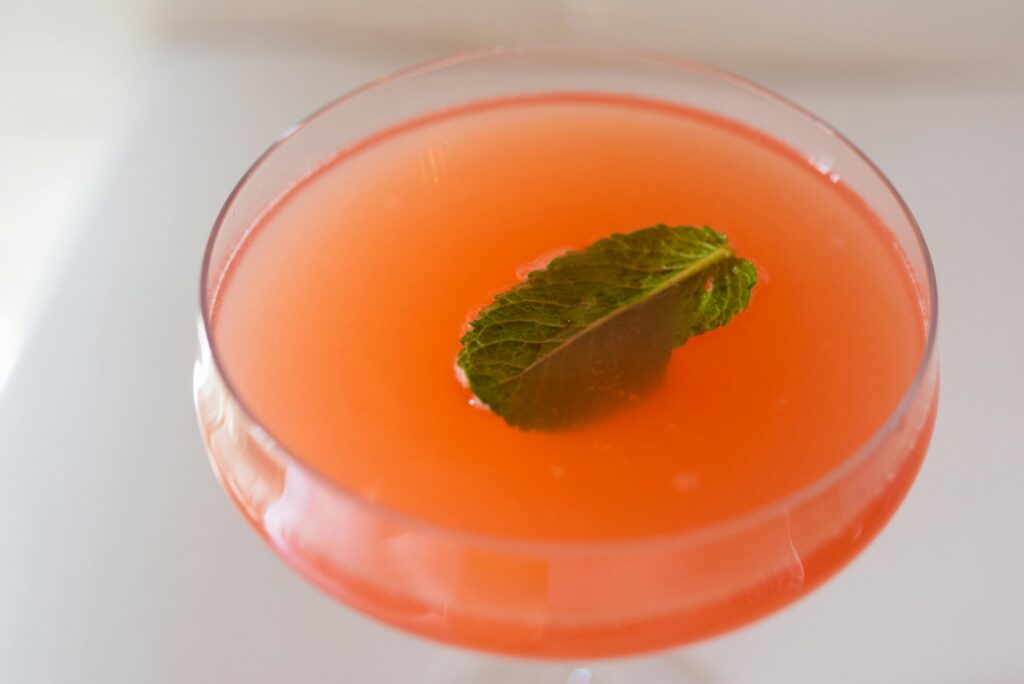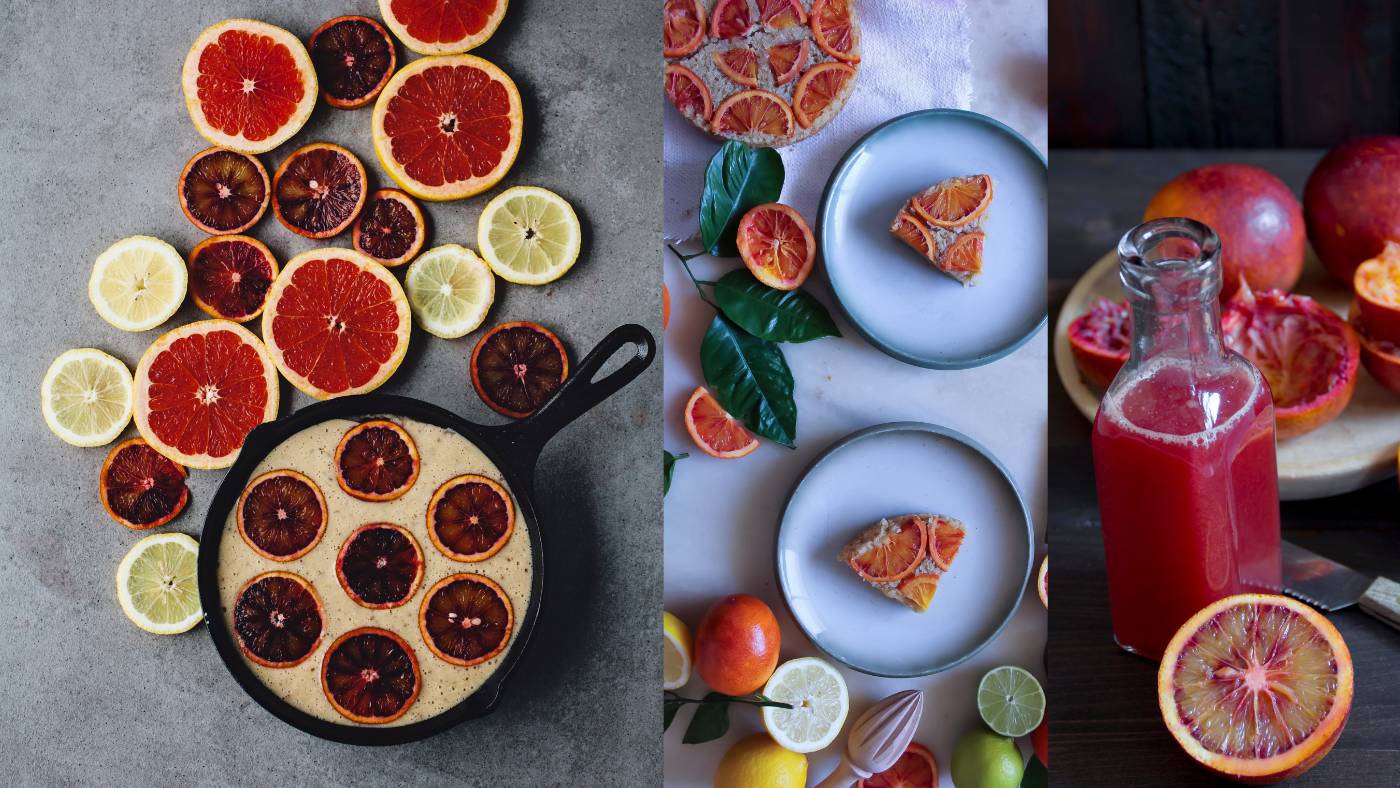What’s So Special About Blood Oranges?

Blood oranges have been around for hundreds of years, but recently it seems like they’re on everyone’s radar. These sweet tangy treats are so popular that people are getting extra creative with them, from color-popping margaritas to refreshing salads.
So, what are blood oranges?
They’re a close cousin to navel oranges but are smaller and darker on the inside. Just like their cousins, blood oranges need to be grown in warm, temperate climates like California or Florida
When are blood oranges in season?
Blood oranges are typically in season from December to May, depending on the variety and growing region.
What are the health benefits of blood oranges?
Blood oranges are rich in vitamin C, fiber, and antioxidants. They can help boost your immune system, improve digestion, and may have anti-inflammatory properties.
How do blood oranges differ from navel oranges?
Blood oranges have a distinct dark red or maroon flesh, which is caused by the presence of anthocyanins, a type of antioxidant. They also have a unique flavor profile, often described as a mix of citrus and raspberry.
How can I use blood oranges in cooking?
Blood oranges can be used in a variety of ways, including in salads, desserts, sauces, and beverages. They add a vibrant color and unique flavor to dishes
Looking to stock up on fresh blood oranges?
Our fresh blood oranges are perfect for restaurants, bars, and anyone looking to buy in bulk. They are sourced from the best orchards, ensuring top quality and freshness.
Juicy facts about blood oranges
Blood oranges originated in Sicily, Italy and they were first documented in the early 1600s, as a combo between a tangelo and pomelo. Later on, they came in handy as a cure for scurvy (a disease caused by vitamin C deficiency) along with citrus fruits such as oranges and lemons and other vitamin C – rich foods.
The most common blood orange types that you’ll find in stores are Moro Blood Orange and Tarcco, but there’s more.
There are 15 other varieties in total, including Sanguinello, Matlese, Khanpur, Washington Sanguine, Ruby Blood, Sanguina Dobla Fina, Delfine, Red Valencia, Burris Blood Valencia, Vaccaro, Sanguine grosse ronde, Entra Fina, and lastly, Sanguinello a pignu.
Nowadays, the peels of blood oranges are commonly used in oils for sodas and cosmetic products.

When are blood oranges in season?
These oranges typically grow on citrus fruit trees and are harvested between February to Early March. But when are they available? You’ll find this fruit in the store from October to March, but it depends on the type of blood orange.
There are two varieties that you’ll typically find in grocery stores: Moro and Tarocco. Morros are available from November to March, whereas Taroccos can be found anytime between January to May.
Blood oranges vs. navel oranges
Blood oranges are closely related to navel oranges, so they’re similar in many ways. Let’s start with color. The inside of a blood orange is a deep red color, which is how it got its name, but with navel oranges, the inside is orange. Both oranges have similar amounts of vitamin C for nutrition.
The difference between these two varieties of orange is that blood oranges have an antioxidant called anthocyanin. This antioxidant gives blood oranges their distinct color, but it also reduces the risk of cardiovascular diseases. Also, the blood orange is less tangy than a navel orange but has a floral tart taste.

Health benefits of blood oranges
Consuming blood oranges comes with many health benefits. The anthocyanin present in the fruit helps reduce cardiovascular disease risk and has anti-cancer properties. Other antioxidants that blood oranges have are coumaric acid and hydroxycinnamic acid, found in most fruits and coffee.
Similar to navel oranges, they have a high amount of fiber going into nutrients. Most importantly, they provide lots of vitamins like vitamin C, B, and potassium.
Creative ways to use blood oranges
Since blood oranges have a unique floral tart taste, there are many ways to use them. A blood orange margarita is your new best friend if you love tequila. The sweetness from the agave and the tartness of the blood orange creates a floral yet cooling drink to have on a lovely spring day.

Refreshing Blood Orange Margarita
Ingredients
- 2 ounces fresh blood orange juice
- 1 ounce lime juice
- 2 ounces tequila
- 1 ounce triple sec or Cointreau
- 1/2 ounce agave syrup
- Salt for rimming the glass
- Ice cubes
- Blood orange slices and lime wedges for garnish
Instructions
- Rim the edge of a margarita glass with a lime wedge and dip it in salt.
- Fill a cocktail shaker with ice and add the blood orange juice, lime juice, tequila, triple sec, and agave syrup.
- Shake well until the mixture is chilled.
- Fill the prepared glass with ice and strain the margarita into the glass.
- Garnish with a slice of blood orange and a lime wedge.
- Serve immediately and enjoy this vibrant, citrusy cocktail!
Notes
This Blood Orange Margarita is perfect for upscale restaurants and bars looking to offer a unique twist on a classic cocktail. Blood oranges are in season during the winter months, making this drink a fantastic seasonal special. For bulk purchases of blood oranges in NYC, consider sourcing from local fruit produce suppliers for the freshest ingredients.

Ingredients
- 4-5 fresh blood oranges
- 1 tablespoon honey or agave syrup (optional)
- Ice cubes (optional)
- Mint leaves for garnish (optional)
Instructions
- Wash the blood oranges thoroughly under running water.
- Cut the blood oranges in half and squeeze the juice using a citrus juicer or by hand.
- Pour the freshly squeezed juice into a glass.
- If you prefer a sweeter drink, add 1 tablespoon of honey or agave syrup and stir well.
- Add a few ice cubes if you like your juice chilled.
- Garnish with mint leaves and serve immediately.
Notes
Blood oranges are not only delicious but also packed with antioxidants, vitamin C, and other nutrients. Enjoy this refreshing juice as a healthy start to your day!
If your menu is looking for a pop of color, add blood oranges to a salad like a blood orange fennel salad, a healthy, colorful option for your customers. As for dessert, an upside-down blood orange cake is the perfect refreshing sweet treat. The softness of the cake and the sweet-tangy taste of the blood orange will bring warmth to guests with one bite.
Where can you find blood oranges?
If you’re looking to add some sweet tang to your special of the week, you’re in luck, Riviera Produce has that for you. If you want to add them to a salad special or a drink special, get them at Riviera Produce, a business-to-business produce provider that supplies fresh blood oranges near you in New York area.
Blood oranges are a small yet sweet-tart fruit in the orange navel family and have a dark pink/red color inside that can make any drink or dessert pop because of its color and flavor profile. Now that we’re in the month of March, you can find blood oranges at Riviera Produce, so go ahead and place your order!
